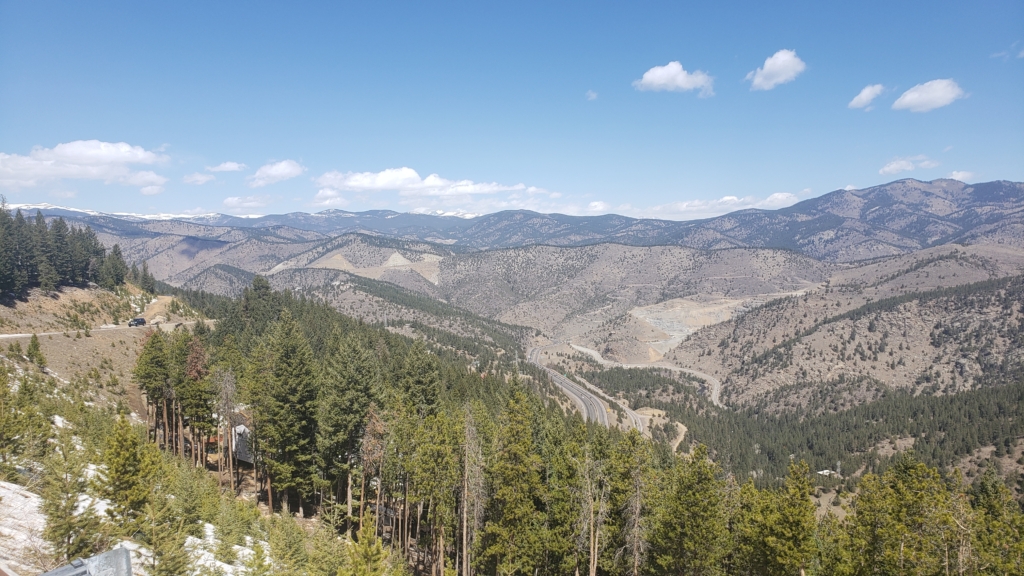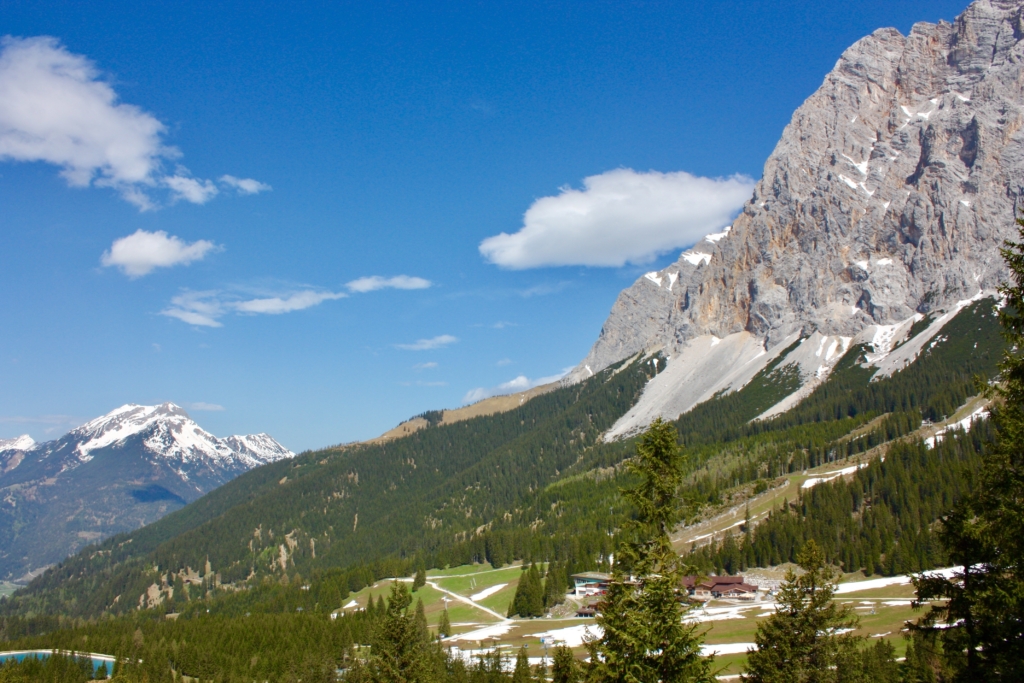How To Adapt To High Altitude Life: Rocky Mountain Towns
The elevation of Evergreen Colorado is 7,220 feet and can range to over 9,000 feet in elevation depending on the location. Altitude sickness is common when people are traveling to places of higher elevation in a very short period of time. The higher you climb, the lower the air pressure and oxygen levels get. The rapid change in elevation can bring on a variety of unpleasant symptoms. Be sure to drink plenty of water and avoid alcohol. Start using Acli-Mate® Mountain Sport Drink three days prior to arrival at high elevation.
What is altitude, and why can’t I live here?
Altitude is the difference in elevation from sea level. This affects air pressure and causes changes in climate, which can lead to a variety of health issues for people living at high altitudes. There are two types of high-altitude regions: Mountainous areas like Colorado, where the elevation is between 4,000 and 16,000 feet; and Plateau areas like Utah and Wyoming which typically have an elevation around 5,300 to 6,500 feet. If you live at an altitude of 3,000 to 6,500 feet then you are considered a resident of a high-altitude community. High-altitude environments require different adaptations because they have significantly more oxygen than lower altitude environments. These adaptations vary depending on the individual’s age and health status as well as their personal needs.

Adjusting to High Altitude – Colorado
Colorado Has a lot of High Altitude Towns
As you may be aware, Colorado is home to a lot of mountain towns. Each town offers its own unique flavor, with high altitudes ranging from 5,000 to 11,500 feet. Some of these mountain towns are more serene and perfect for those who might be looking for a low-key life. Others are more active and exciting. It’s hard to choose which one is right for you. So here are some different aspects of life in the Rocky Mountains that will help you decide which type of living environment is best for you.
Altitude Sickess in The Denver Foothills
High Altitude Illness is a general term used to describe diseases that affect the normal functioning of the lungs and bronchi. Symptoms include: Headaches, Chest Pain, Feeling Sick/Exhausted, Dizziness, Uncontrollable Sweating, Difficulty in Breathing and Shortness of Breath. It can sometimes take days for the body to adjust to high altitude. High altitude can also occur at elevations above 8,000 feet. Avoid driving on mountain roads and the airport if you are a frequent flyer.
What is high altitude living like?
Living at high altitudes is a different experience than living in lower altitude areas. The first difference is the lack of oxygen. This affects the body in more ways than just breathing, but also affects metabolism and immune response. In addition to less oxygen, there are other changes that happen at high altitudes. For example, snow melts faster because of lower temperatures and the water vapor in the air condenses into rain and snow. There is also less pressure. This makes it harder for blood to flow through your body’s circulatory system, which can lead to edema or swelling in your lungs. The biggest concern people have when they move to high-altitude environments is with their health. However, many aspects of life in a high-altitude setting are manageable by just making small adjustments to daily routines like diet and exercise.
How high is high altitude?
The altitude in the Rocky Mountains ranges from 4,000 to 16,000 feet. The higher the altitude, the less oxygen there is and the harder it is for most people to breathe.
Depending on your health status and personal needs, you may need high-altitude adaptations like extra oxygen or a pressure chamber. High-altitude environments require adaptations because they have significantly more oxygen than lower altitude environments. For example, Colorado is home to high-altitude towns with altitudes ranging from 5,000 to 11,500 feet. The lower you go in elevation the more oxygen there is. In other words, each mile of elevation decreases atmospheric pressure by one atmosphere (14.7psi). With this much of an increase in pressure comes an increase in oxygen levels.

Adjusting to High Altitude in the Colorado Mountains and Foothills
Understanding High Altitude Illness
1.1 What is High Altitude Illness? High Altitude Illness (HAI) encompasses various conditions that affect lung and bronchial function. Symptoms include headaches, chest pain, fatigue, dizziness, sweating, difficulty breathing, and shortness of breath. The body may take several days to adapt to high altitude conditions. Altitude-related issues can occur at elevations above 8,000 feet.
1.2 Impact of High Altitude on Life Living at high altitudes can have an impact on daily life. Proper management of altitude sickness is crucial for a comfortable experience.
Tips for Adjusting to High Altitude
2.1 Working at High Altitude For individuals with physically strenuous jobs, exercising in a gym at higher altitudes can help prepare the body for the demands of the job. Those with office jobs should avoid driving on mountain roads and limit visits to the airport, especially if they frequently fly.
2.2 Moving to Higher Altitudes Increasing the elevation in your home to around 1,600 feet can help lower your heart rate. It’s advisable to stay at a lower altitude if you have heart disease. Reduce sodium intake and avoid fried foods, as they can lead to weight gain and fluid retention. Consult a healthcare professional before making any medication changes.
2.3 Vacationing at Higher Altitudes Acclimating to higher elevations while on vacation requires planning. Spending at least a week at higher altitudes can help the body adjust. Adjusting to high elevations is possible with time and proper care.
Preventing and Managing High-Altitude Illness
3.1 Regular Breathing Exercises Practicing regular breathing exercises can help adapt to high altitude conditions and improve overall respiratory health.
3.2 Hydration and Nutrition Staying hydrated by drinking plenty of water and replenishing electrolytes is important at high altitudes. Avoid excessive alcohol consumption. Opt for a diet rich in fruits, vegetables, and healthy fats.
3.3 Medication and Treatment Options Consult a healthcare professional to determine if using medications like albuterol, an inhaled corticosteroid, is suitable for relieving bronchospasms caused by high altitude.
Preparing for Travel and Work in High Altitude Areas
4.1 Pre-Travel Planning Book flights and accommodations well in advance. Establish fitness and eating plans, prioritize rest, and maintain hydration. Dress in warm, waterproof layers and be prepared for changing weather conditions.
4.2 Exercise Precautions Start slowly when engaging in physical activity at high altitudes. Avoid high-intensity exercises that can constrict blood vessels in the lungs and head. High-altitude sickness is more common at elevations above 8,000 feet.
4.3 Managing Symptoms of Altitude Sickness Being aware of your physical limits and pacing yourself is crucial. Take breaks as needed and follow the recommendations of healthcare professionals or altitude specialists.
By understanding and implementing these tips, you can better adjust to high altitudes in the Colorado mountains and Denver foothills, ensuring a more comfortable and enjoyable experience

Altitude and it’s Impact on climate
High altitudes can have an impact on the climate in many ways. The higher altitude means a drier and colder climate, which triggers changes in seasons, temperature, and precipitation. For instance, Colorado is considered to be one of the snowiest places in America with an average annual snowfall of 107 inches. In some mountainous areas, there are more than 300 days of below freezing temperatures each year.
High altitudes also cause changes in elevation that can lead to hypobaric hypoxia when the air pressure is lower than sea level. This causes a lack of oxygen, which can cause health issues for people living at high altitudes.
Adapting to the decreased oxygen
levels
These high altitudes have significantly less oxygen than lower altitude areas. This simple fact has a huge impact on your health because it means that you need to breathe more and exercise a lot harder in order to maintain your activity levels. The key is not to be scared of this change, but instead to embrace it. As with any challenge, you’ll need time to adjust. The first few days will be the hardest, but soon enough you’ll feel better.
If you are living at an altitude of 3,000 feet or higher then you should speak with your doctor about the necessary adaptations for living at this elevation before moving forward with packing up and moving. You may want to consider taking things slow by gradually introducing yourself to the area instead of jumping into a new lifestyle all at once.
Effects of altitude on different age groups and health status
Because of the effects of altitude on oxygen levels, children and older adults are more susceptible to health issues. People who live at high altitudes have an increased risk of developing high-altitude sickness, which can lead to respiratory illnesses like pneumonia.
Depending on their age and health status, individuals may need different adaptations. For example, if you are in your 20s and healthy you might not need any specific adaptations for living at high altitudes. On the other hand, if you are elderly and out of shape, it’s likely that you will experience some health changes due to the decrease in oxygen levels. If you are staying with family members or friends in a low-lying town so that they can help care for you, then this can be less stressful because they do most of the work required for adaptation.
People who live at high altitudes typically require fewer medical appointments than those with chronic health conditions. However, it is important to consult with a doctor before moving to a new area so that adjustments could be made accordingly.
Active life in a high-altitude town
Are you the type of person who likes to be outside? There are plenty of things to do in the outdoors in Colorado. Mountain towns like Breckenridge, Crested Butte, and Telluride provide activities for all skill levels. If you’re interested in skiing, golfing, hiking, or mountain biking then these towns are perfect for you! If you love the outdoors and being active then a high-altitude town is a great place for you.
Drink Plenty of Water In High Altitude Areas
In high-altitude areas, it is important to drink plenty of fluids. This helps the body compensate for the lower oxygen levels and prevents dehydration. The best option is a water-based drink such as Gatorade or coconut water. If you are unable to drink these because of a health condition, then you should consider adding electrolytes to your water in order to maintain proper hydration.
Adjusting to Altitude of the Denver Foothills
The altitude of the Denver foothills varies between 1,000 and 6,500 feet. It’s important to note that each person will process oxygen differently due to their age and health status. High-altitude living can lead to fatigue, nausea, dizziness and even heart attacks so it’s important for people to be mindful of their personal needs for adaptation.
If you are not accustomed to high altitudes then you might experience some symptoms of altitude sickness such as difficulty sleeping, headaches or nausea. If you have a history of coronary artery disease or other cardiac issues then you may also be at risk for altitude-related complications.
People who live in the Denver foothills tend to have a more active lifestyle with lots of outdoor recreation opportunities like hiking and biking trails nearby. People who want a less active lifestyle will enjoy the peacefulness of this area with its wide open spaces and natural beauty.
A few things to consider when assessing your options: Are you interested in living in an urban environment? Is being outdoors a priority? What are your plans for retirement? How much time do you want to spend traveling? If you’re looking for an active life, then this might be the place for you.
Evergreen – Conifer – Morrison – Idaho Springs
If you are looking for a serene and low-key life, then Evergreen, Conifer, or Morrison might be your best option. These mountain towns are all situated in the Rocky Mountain Range and have a lower elevation of approximately 4,000 feet, making them perfect for those who are more sensitive to high altitudes
Disclaimer: Of course, I am not a doctor and this is not medical advice. Just trying to give a little advice to help you adjust to high-altitude living. Please consult your doctor before moving or vacationing at high altitude if you have any concerns.

Orson Hill Realty is a real estate company in Evergreen, Colorado that serves the Denver Foothills and the Denver Metro. Orson Hill Realty can assist in any size real estate transaction from small land listings to luxury listing agents and buyer brokers.
Orson Hill Realty has experienced listings agents and buyer agents. Our Realtors know how use high tech digital marketing mixed with old school marketing to sell your home faster and for more money.
This technology also helps buyers find their home faster. That way a buyer never misses the perfect home again. Any real estate agent in this day and age that doesn’t leverage technology is not doing their clients any favors. All Orson Hill Realty real estate agents are Realtors.
Orson Hill Realty is a full-service Colorado-based real estate company that offers professional real estate agents and brokers to assist you in your buying or selling process. Our agents are well-versed in the local community and have a strong online presence, making them highly effective in their field. For buyers, we offer online listing alerts and a user-friendly portal to facilitate an efficient home search, with access to homes not yet on the market, and for sellers, we advertise on a wide range of listing websites to ensure high visibility for your listing.
As realtors, we are dedicated to upholding a higher level of ethics and experience in our business, and we are deeply invested in the community, with active participation in various local events and activities. Our real estate agents possess a wealth of knowledge on the local area and know how to negotiate the best prices for your needs. We offer excellent services for luxury homes and horse properties, although we handle any size real estate transaction with utmost professionalism.
Our company places a strong emphasis on technology, recognizing the importance of an online presence to meet the demands of our fast-paced industry. With multiple high traffic websites and digital marketing strategies, we ensure that your property is marketed throughout the internet to reach a wider audience. We are dedicated to providing luxury services to all our clients, regardless of the price point.
Orson Hill Realty
Ask me about Southwest Florida real estate

The Rocky Mountains boast several towns at a very high elevation. From the largest incorporated city in the U.S. to one of its most popular ski towns, Colorado features a number of places to stand well above sea level. Mount Elbert is the state’s highest peak, with a summit of 14,440 feet (4,401 meters) in elevation. The lowest point lies on the eastern plains by the Arikaree River at 3,317 feet (1,011 meters)
https://ohrrealestatenews.com/tiny-homes-in-colorado-what-to-know-about-building-a-tiny-house/
With high elevations and cold temperatures, Colorado is blessed with outdoor ice rinks all winter long across the state. The outdoor ones will typically be open like a ski resort, from December to March, sometimes longer. The indoor rinks will likely be open all year and feature lessons, leagues, events and amenities. Most of the popular tourist destinations have at least one option for strapping on a pair of skates nearby. Most will also have rental pairs for a reasonable fee and the rinks are minimally priced for skating.